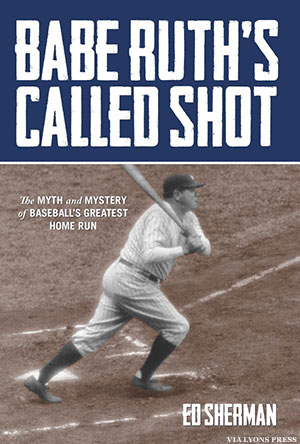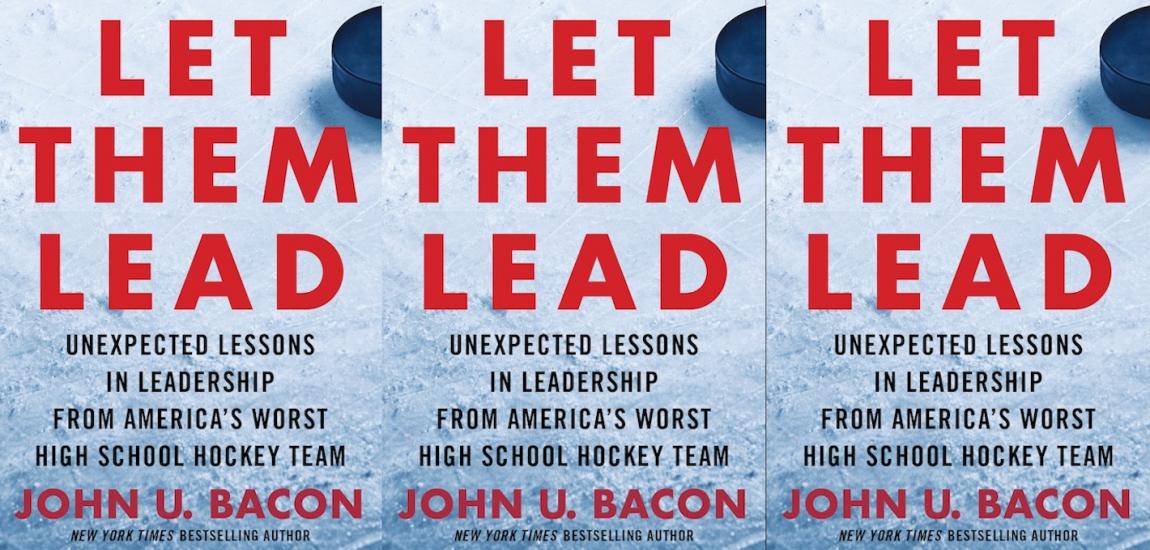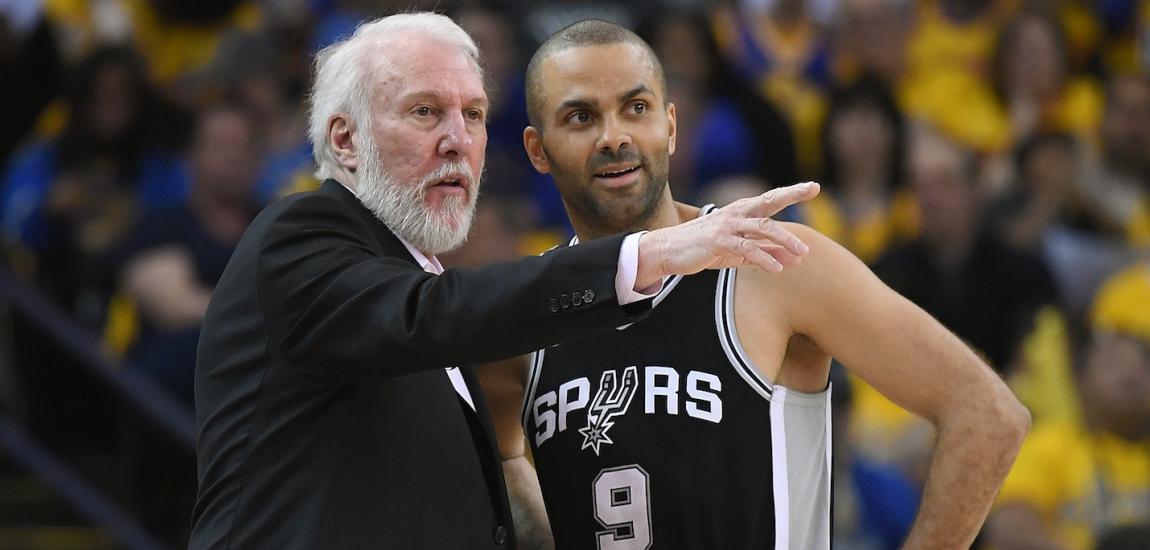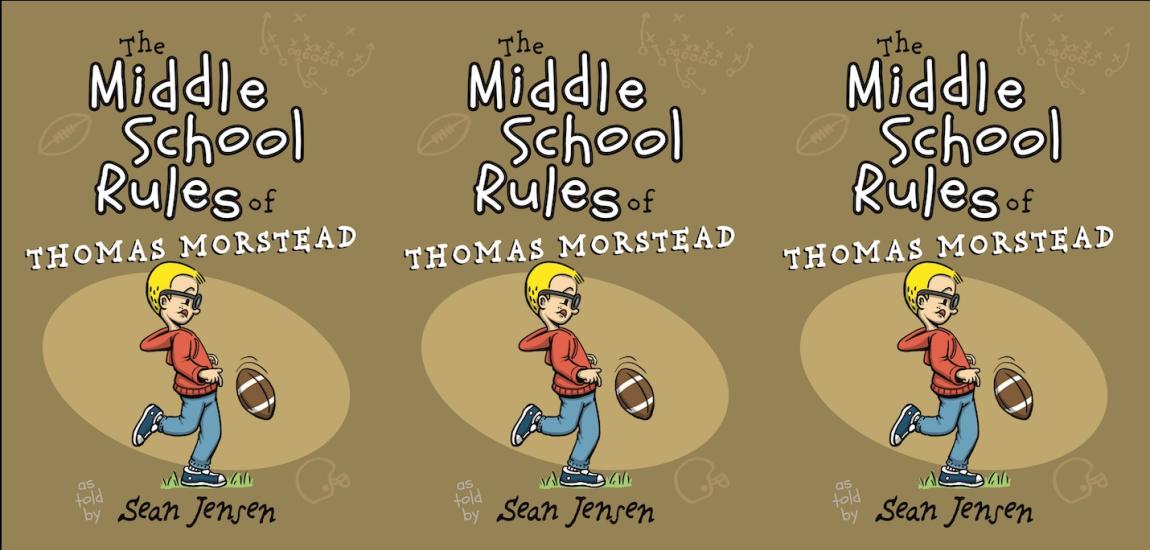There is no question that Babe Ruth hit a mammoth home run in Game 3 of the 1932 World Series at Wrigley Field. But the debate about whether Ruth actually called his shot against the Cubs still divides fans and sports historians alike more than 80 years later. Veteran Chicago sportswriter Ed Sherman provides the first full-length, in-depth look at one of baseball’s most celebrated and enduring moments -- including the incredible stories of two hand-held videos taken by fans and rediscovered decades later -- and tackles the question: Did Ruth really call his shot? Here is an excerpt from Babe Ruth's Called Shot: The Myth and Mystery of Baseball's Greatest Home Run.
"Well, the good Lord and good luck must have been with me because I did exactly what I said I was going to do."
-- Babe Ruth
Nearly a century has passed since a young kid named George Ruth played his first professional game for the Baltimore Orioles, but the woman on the other end of the line is referring to him as "Daddy." The notion is almost mind-boggling. It doesn't seem possible that Ruth's daughter could still be alive in 2013, but thanks to longevity Julia Ruth Stevens, 96 years young on the day we spoke, is sharing memories of her father one more time.
I tell her what a thrill it is to be speaking to her.
"It's a thrill to me that I'm still here,” she said, not missing a beat. "It's a thrill to me every time I wake up in the morning."
Charlie Root's family thought the Called Shot a myth, but Ruth's family has no such disbelief. While Ruth’s own comments about what happened that day ranged all over the map, there's no doubt about it in the eyes of his daughter, grandchildren, and great-grandchildren. He definitely called his shot.
After he married his second wife, Claire, in 1929, Ruth formally adopted Claire's daughter, Julia, who has spent a good portion of her life talking about "Daddy” and his many deeds on the baseball field. Ruth and Julia had a warm, close relationship, and you still can hear the affection in her voice for a man who died in 1948.
"People always say, 'It's such an honor to meet you,'" Julia said. "I know they're saying that because I'm Babe Ruth's daughter and that's the closest they'll ever get to Daddy. I just enjoy meeting people, and a lot of them have stories about Daddy. I love to hear them."
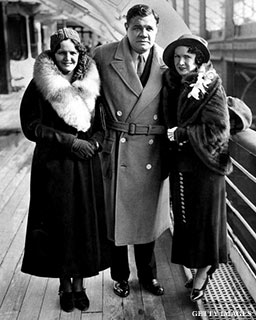
Not many people are still alive who can recall witnessing her father hit home runs.
"It was always a thrill,” she said. "I didn’t go to all of the games, but I went to a lot with my mother. I wanted him to hit a home run every time. Everyone would start cheering when he came up. If he hit a home run, it was beautiful to see. He’d trot around the bases. Then when he got to home plate, he’d lift his cap to the crowd.
“I used to say, 'Hit the apple in the eye, you'll see how high it will fly.'"
Julia wasn't in Wrigley Field to see her father hit his massive homer during the fifth inning of Game Three. But she has seen footage and read countless stories about that memorable day. More importantly, she heard direct testimony from key witnesses at the game, including her mother and Cardinal Francis Spellman, the longtime archbishop of New York.
"Daddy certainly did point,” Julia said. “He always seemed to rise to the occasion. He just wanted to beat the Cubs. If he had missed, he'd have been very, very disappointed, I can tell you. Cardinal Spellman just happened to be at the game. He said there’s no question that he pointed. I'll take his word and my mother's.”
Ruth's grandchildren and great-grandchildren second Julia's opinion. Brent Stevens, Julia's grandson, celebrates his great-grandfather's life with BabeRuthCentral.com, and Stevens doesn't waver when it comes to the Called Shot.
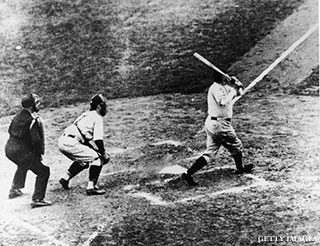
"The family's perspective is that he pointed to the outfield before that momentous pitch," said Stevens. "Whether he pointed to the exact location, as suggested by some of the media, is more questionable. However, he definitely indicated that he was going to hit a home run prior to that shot in Game Three of the '32 World Series."
Linda Ruth Tosetti also staunchly preserves her grandfather’s legend. Her mother, Dorothy, was Ruth’s natural daughter from a relationship he had with a woman whom he never married. Tosetti calls herself a “blood granddaughter” and proudly boasts of her resemblance to her forebear. Tosetti has her own website through which she savors the family connection, TheTrueBabeRuth.com.
Tosetti first heard of the Called Shot when as an eighth-grader she accompanied her mother on a trip to the Baseball Hall of Fame. "This player came up to us," she said. "I can't remember his name, but he was very loud about it. He said, 'Dorothy, don’t let anyone say he didn’t point. I was there, and I saw it. He pointed.' Later, I asked my mother, ‘What's the Called Shot?'"
Tosetti soon learned more about the legend. Like her relatives, she maintains that it is true. “Yeah, I think he was bold enough to point,” she said. “My grandfather was very confident in what he could do. Could he have done it? Most definitely.”
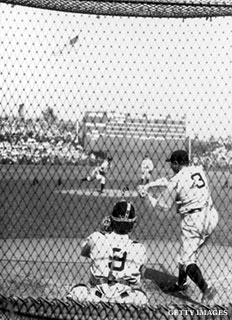
But what about the man himself? What did Ruth have to say about the homer?
Surprisingly Ruth wasn't always as emphatic as his family about whether he pointed that day at Wrigley Field. Tom Meany, a sportswriter who knew Ruth well, noted Ruth's inconsistencies when telling the story. In his 1947 biography on Ruth, Meany writes that "Ruth had changed his version several times ... and had grown confused, uncertain whether he had picked out a spot in the bleachers to park the ball, or was merely pointing to the outfield, or was signaling that he still had one swing to go."
If ever an episode deserved immediate reaction and commentary from the participants -- from Ruth and Root to the jeering Cubs in the dugout -- it was the Called Shot. However, it didn't work that way back in 1932. Sportswriters wrote what they saw on the field. Sports journalism didn’t include working the locker room for quotes from the players and managers. As a result, dispatches went off to newspapers throughout the country following Game Three that featured flowery prose -- but nary a quote about the showdown in the fifth inning.
Meany came closest to getting some sort of immediate reaction from Ruth. Writing for the New York World-Telegram, he told of visiting Ruth's apartment after the team returned to New York City on October 3. Meany asked him about the Called Shot:
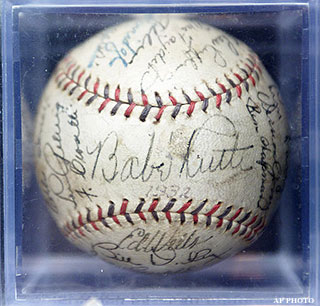
Ruth's family insists that he was just being modest. Julia said she never recalled her father talking to her about the Called Shot. "It's not something he would do," Julia said. "He was very modest. He felt he was lucky to be in the position he was in. He always tried his best and wanted to be good for all the kids."
Tosetti offered a similar version: "He wasn't one to boast about himself. That's why his teammates loved him. Even though he was Babe Ruth, he never pushed that."
But one quote in particular buoys the naysayers in this debate. It comes from an interview that Ruth did with Hal Totten early in the 1933 season. Totten, a Chicago broadcast pioneer who had been at the game, asked Ruth that next year if he had pointed to center field. Ruth replied:
Well, there we have it -- solid proof. Babe Ruth said he didn’t do it. If he had pointed, Root would have beaned him. The Cubs pitcher is off the hook and doesn’t have to endure an afterlife of questions about being the sap who gave up the famous homer.
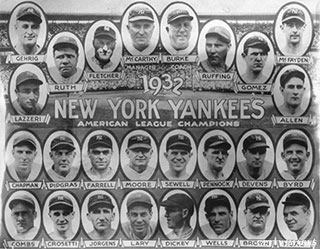
It should have been that way, but it wasn't. If Ruth had made those comments today, the Internet would have exploded with the admission. End of story. But back then, Ruth’s comments to Totten likely reached a limited section of people in Chicago. As a result, his revelation had a short shelf life.
Whatever the reason, Ruth's admission to Totten didn't become his definitive take on the subject. Far from it, in fact. The story of the Called Shot continued to circulate, and at some point Ruth jumped on the train. The theories are obvious: Why deny something you really did, or, if the public wants to believe in a grandiose gesture, why not let them?
"I think it got to the point where he was asked about it so many times," Tosetti said. "When they said, 'Hey, Babe, did you really point?’ I could see him laughing it off and saying, ‘Yeah, sure.'"
In 1948, shortly before the Bambino's death, E. P. Dutton published The Babe Ruth Story, cowritten with Bob Considine. It’s hard to say how much Ruth was able to participate in the writing of the autobiography. According to Tosetti, the advancing stages of cancer made it difficult for him to talk in his final months. He might have nodded to indicate if he approved of how something was worded -- if even that much.
Still, a line appears under his signature on the book's cover that reads, "My only authorized story." The book also features this dedication: "This book, the only authentic story of my life, is sincerely dedicated to the kids of America." The story is told in the first person, and the stories align with his career.
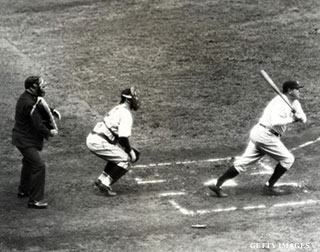
Ruth doesn't address the Called Shot until chapter 17. Tellingly, while his famous home run is all anyone talks about from that World Series, he opens by giving credit to Lou Gehrig for the sweep. Ruth might have been the only person who noticed. He wrote, "Lou was the solid man of the 1932 Series."
Ruth and Considine get their facts wrong when they finally get into the Called Shot itself. His account has Ruth coming up in the fourth inning—but he came up in the fifth. It puts Earle Combs on base -- but nobody was on. And of course, as in many retellings of the story, Ruth had the count at 0–2 instead of 2–2.
Ruth starts his account by recalling the abuse he was receiving from the Cubs dugout:
Actually, it was worth only one run, making the score 5–4. It's surprising that Ruth and his co-writer didn't have the facts right in his own book. Then again, Ruth could barely remember anyone's name.
Perhaps Ruth's most interesting and famous comment on the Called Shot came during a conversation with Ford Frick, his ghostwriter who eventually became baseball's commissioner. Several years after the game, Frick tried to get a clear answer out of Ruth. "Did you really point to the bleachers?” he asked.
Doubtless tired of answering yet another inquiry or maybe not wanting to lie to his friend, Ruth replied, "It's in the papers, isn't it? Why don't you read the papers? It's all right there in the papers."
-- Excerpted by permission from Babe Ruth's Called Shot: The Myth and Mystery of Baseball's Greatest Home Run by Ed Sherman. Copyright (c) 2014 by Ed Sherman. Published by Lyons Press. All rights reserved. No part of this excerpt may be reproduced or reprinted without permission in writing from the publisher. Available for purchase from the publisher and Amazon. Read more of Ed Sherman on his site, Sherman Report, and follow him on Twitter @Sherman_Report.

